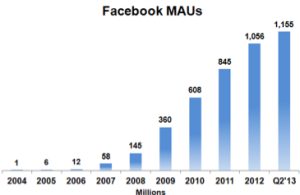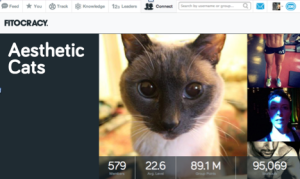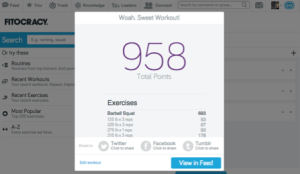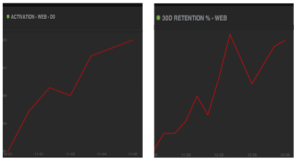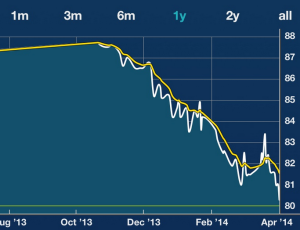This is the second part of a two-part series on The Ultimate Guide to Cheating. If you’re looking for Part 2, “Implementing the Cheat,” you can find it here. Also make sure you’ve read the Persona-Based Strategy Guide to Hitting Your Macros.
There’s been a lot written about the physiological justification behind overfeeding, cheat meals, and cheat days. (John Romaniello has a pretty good writeup using the example of “cheat days” here.)
I want to talk about a different perspective – more specifically the psychological importance of deviating from diet and how it can make or break your success.
If you are the type of person who’s always trying to maintain your diet through countless work dinners, happy hours, weddings, and weekend benders, listen up because this is for you.
A Quick Thought Experiment
John and Brad are identical twins. They live together, weigh the same (not surprising given that they have identical genes) and are following the same macros and training program in order to lose weight.
Their diet is rigid, cutting out all alcohol, processed food, or anything that they deem “unclean.” It has seemingly paid off; after a month of aggressive dieting and “eating clean,” they’ve lost a respectable 10 lbs each.
There’s just one problem. Thanksgiving is just around the corner, and they don’t want to undo all of their progress, knowing their family likes to throw big feasts. On Thanksgiving day, John and Brad go into a feeding frenzy. They eat the exact same identical items and stuff themselves silly with the exact same calories.
Now their physiological actions have been identical thus far, but the next day their fate takes two very different turns.
John is still in feeding frenzy mode, binging on everything in sight, while Brad easily gets back on the horse. By the end of the holiday season, Brad eventually ends up losing 15 lbs, while John eats himself back to where he started.
Brad did one thing differently from John on Thanksgiving day. This thing is something so minuscule, yet in many cases, powerful enough to determine one’s diet success.
What did Brad do differently? Brad planned to fail.
Planning to Fail
“Planning to fail” is a tactic that I started cultivating after reading Lyle McDonald’s philosophy on “diet breaks.”
Diets suck. Not only are they difficult to adhere to, restarting a diet after “falling off the horse” is notoriously challenging.
If you are an experienced dieter, then you know exactly what I’m talking about. Like John in our example above, cheat days often turn into cheat weeks, which turn into cheat months, which turn into cheat years.
So it came as a bit of a surprise when researchers, in order to find out the trouble with “restarting” a diet, instructed participants to take a short break from their diet. The researchers found that not only did dieters not gain weight during the break (compared to the control group), but they had no problem getting back on the diet.
What gives?
Unfortunately the explanation was outside the scope of this study, but client feedback and my own experience with dieting were more than enough to come up with a very plausible answer.
Mindset – Same actions, different outcome
I’ve written before about cases in which two people can perform identical actions, yet have drastically different outcomes due to mindset. One example of this is whether or not cardio leads to weight loss.
In some cases, the tie between mindset and physiology is remarkably inextricable, such as this study, which demonstrates that the amount of ghrelin released by your body depends on your belief about a meal’s caloric contents.
The explanation of the “diet break” study is one of these cases.
I’ve found that when unplanned, diet failure is de-motivational, anxiety-inducing, and downright mentally taxing. It’s a big hit to the resource pool of willpower, self-control, and motivation that drives you towards your goals. Think about what you felt the last time you had a sizable diet failure. It was probably a mixture of guilt, anxiety, and listlessness.
Planned (legitimately planned… not rationalized in the moment) failure is different, however. At all times, the course of actions that you execute are intentional. Strategy and execution are in harmony. While you may feel physiological discomfort after something as large as a “cheat day,” the psychological repercussions listed above should be close to non-existent.
Thinking about risk vs. reward when deciding to cheat
The information above allows us to create a very powerful tool at our disposal – the ability to analyze tradeoffs between risk and progress when making future cheating decisions.
Let’s say that you have a wedding coming up next week. You have two options.
1. Power through the wedding and hit your macros. If you decide to hit your macros, then you do not lose any progress. You do, however, run the risk of a very costly mental and emotional setback should you stray from your diet.
2. Plan to fail. (There are various degrees of “failing,” each with a separate tactic. We’ll discuss these in the second part of this guide.) If you “plan to fail” then you lose anywhere from 1-3 days of progress; however, you eliminate the risk of failing epically.
At this point, it’s helpful to ask yourself the following question honestly: “Will I be able to hit my macros through this wedding?” If you are like most normal human beings, the answer is likely no, so you plan to fail.
Or perhaps you have a bodybuilding show coming up, and you absolutely want to win. In this case, you have a higher risk tolerance and decide to power through your macros. The point is that you now have a framework which you can use to assess risk vs. progress.
Before developing this framework, I’d go into many events with the “power through” mindset, only to fall prey to a piece of cake – probably a subpar slice too (crusty, stale, skimping on icing), since I spent the better half of the wedding trying to stick to my diet. Let me tell you… this method is infinitely better.
A Quick Case Study – “Max”
“Max,” a real (and current) client of mine weighed 405 lbs when he started with me. A few weeks into his diet, he seemed demotivated and unable to make progress. I did some digging into his lifestyle and adherence to find out why.
While his diet adherence on the weekdays was great, he found himself restless and compulsively eating on the weekends, thereby nullifying his progress.
Knowing that people of his weight may respond better to lower carbohydrate diets, and that it would be far easier to allow Max to fail on the weekends, I figured that the Cyclical Ketogenic Diet (CKD) would be a perfect fit for Max.
CKD would allow Max to create a larger caloric deficit on the weekdays without increasing his level of hunger, while allowing him the freedom of eating whatever he wanted on the weekends. (This might be dangerous for some, but Max wasn’t a huge binge eater so much as a boredom eater.)
The result? Max was down to 380 lbs in a few short weeks and actually ended up consuming the same amount on the weekend, while maintaining his sanity.
Onward to part 2 on “implementing the cheat“… i.e. the various degrees of “planning to fail”


